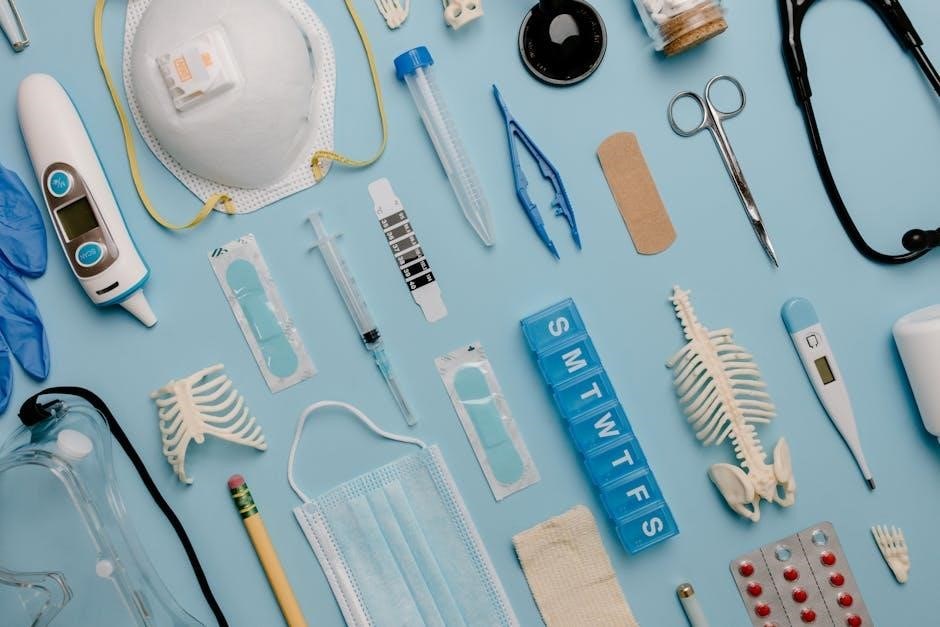The Pill Cam is a small, ingestible capsule with a camera designed to visually examine the small intestine. These instructions guide preparation, procedure, and post-care for optimal results.
1.1 What is a Pill Cam?
A Pill Cam is a small, ingestible capsule containing a tiny video camera and light source. It is approximately the size of a large vitamin pill and is used to visually examine the inside of the small intestine. The capsule is designed to naturally pass through the digestive system while capturing images of the intestinal lining. These images are transmitted to a portable recorder worn by the patient, aiding in the diagnosis of conditions such as Crohn’s disease, bleeding, or other small bowel disorders. The Pill Cam is a non-invasive tool that provides detailed visuals of areas difficult to reach with traditional endoscopy methods.
1.2 Purpose of Pill Cam Instructions
The purpose of Pill Cam instructions is to ensure patients understand how to prepare for, undergo, and care for themselves after the capsule endoscopy procedure. These guidelines help maximize the accuracy of results, minimize potential complications, and ensure patient safety. By following the instructions carefully, patients can contribute to a successful examination of the small intestine, aiding in the diagnosis of conditions like bleeding, Crohn’s disease, or other abnormalities. The instructions also aim to provide clarity on what to expect and how to manage daily activities during the procedure, ensuring a smooth and stress-free experience for the patient.

Preparations for Pill Cam Procedure
Preparations include dietary changes, stopping iron supplements, bowel preparation, wearing loose clothing, and avoiding lotions or powders on the abdomen to ensure optimal procedure results.
2.1 Dietary Restrictions Before the Procedure
Dietary restrictions are crucial to ensure clear images during the Pill Cam procedure. Patients should avoid solid foods and start a liquid diet the day before the procedure. Clear liquids, such as water, clear broths, and electrolyte solutions, are allowed until 10 p.m. the evening before. Avoid red or dark-colored liquids, as they may interfere with image clarity. No eating or drinking is permitted after midnight, except for necessary medications with a small sip of water. Adhering to these guidelines helps ensure the capsule captures the best possible images of the small intestine. Failure to follow these restrictions may require rescheduling the procedure;
2.2 Stopping Oral Iron Medications
Patients must stop taking oral iron medications at least five days before the Pill Cam procedure. Iron can interfere with the capsule’s imaging by causing darkness in the intestinal lining, reducing the clarity of the images captured. This includes iron supplements and multivitamins containing iron. Ensure to review all medications with your doctor, as some may need to be adjusted temporarily. Adhering to this guideline is essential for obtaining accurate results from the procedure. Failure to stop iron medications may require rescheduling the Pill Cam test to ensure optimal imaging quality.
- Stop oral iron supplements five days before the procedure.
- Check multivitamins for iron content and discontinue if necessary.
2.3 Bowel Preparation Instructions
To ensure clear imaging during the Pill Cam procedure, proper bowel preparation is essential. Patients are typically instructed to follow a liquid diet the day before the procedure, avoiding solid foods. In some cases, a bowel prep solution like Golytely or Miralax may be prescribed to cleanse the intestines. These solutions should be taken as directed, usually starting in the afternoon or evening. It’s important to complete the entire preparation to ensure the bowel is clear of residue. A clean bowel allows the capsule to capture high-quality images of the intestinal lining, which is critical for accurate diagnosis. Follow your doctor’s specific instructions carefully.
- Start a liquid diet the day before the procedure.
- Use prescribed bowel prep solutions as instructed.
- Avoid solid foods to ensure a clean bowel.
2.4 Clothing Recommendations for the Procedure
Wearing the right clothing for the Pill Cam procedure ensures comfort and proper sensor function. Patients should wear loose-fitting, two-piece clothing, such as a shirt and pants or a skirt, to allow easy access for the sensor pads. Avoid tight or restrictive garments that may interfere with the sensor belt. Additionally, natural fibers are recommended as they are less likely to cause skin irritation. Do not apply lotions or powders on the abdomen, as these can interfere with sensor adhesion. Comfortable clothing will help you move freely during the procedure and ensure accurate data collection.
- Choose loose-fitting, two-piece outfits.
- Select natural fiber fabrics.
- Avoid lotions or powders on the abdomen.
2.5 Avoiding Lotion or Powder on Abdomen
Do not apply lotions, creams, or powders to your abdomen or chest on the day of the Pill Cam procedure. These substances can interfere with the adhesion of the sensor pads, reducing their ability to collect accurate data. Ensure the skin is clean and dry for optimal sensor function. If necessary, shave the area beforehand to ensure proper contact. Avoiding these products helps maintain the integrity of the sensors and ensures the procedure yields reliable results. Your healthcare provider may provide additional guidance on preparing your skin for the best outcomes.
- Clean and dry skin is essential for sensor adhesion.
- Avoid lotions, creams, and powders on the abdomen and chest.
- Shave the area if needed before the procedure.
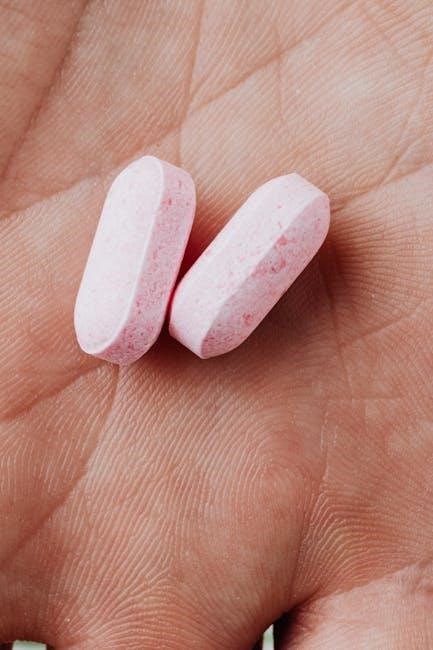
Day of the Procedure
To ensure proper sensor function, avoid applying lotions, creams, or powders to your abdomen or chest on the day of the Pill Cam procedure. These substances can interfere with the adhesion of the sensor pads, which are essential for capturing accurate data. Clean, dry skin is crucial for optimal sensor performance. If needed, gently shave the area beforehand to ensure better contact. By following this guideline, you help guarantee the procedure’s success and the quality of the results. Proper preparation is key to achieving clear and reliable images of your digestive tract.
- Clean, dry skin is vital for sensor adhesion.
- Avoid lotions, creams, and powders on the abdomen and chest.
- Shaving the area may be necessary for proper sensor contact.
3.1 Arrival and Check-In
Arrive at the designated time for your Pill Cam procedure. Upon check-in, confirm your identity and procedure details with the staff. Wear loose, two-piece clothing as instructed to facilitate sensor placement. Avoid applying lotions or powders on your abdomen or chest to ensure proper sensor adhesion. Bring any required medications or documents, and inform staff of any allergies or concerns. After check-in, you will be prepared for the procedure, which includes fitting the sensor belt and ingesting the capsule. Cooperation with staff ensures a smooth and successful process. Be ready to follow all guidance provided by the medical team.
- Confirm appointment details upon arrival.
- Wear appropriate clothing for sensor placement.
- Bring necessary medications and documents.
- Inform staff of allergies or concerns.
3.2 Ingesting the Pill Cam Capsule
Swallow the Pill Cam capsule with water as directed by your healthcare provider. Ensure your stomach is empty to enhance image quality. Avoid eating or drinking for at least 2 hours before ingestion. After swallowing, remain seated and avoid immediate movement to help the capsule pass smoothly. You may drink clear liquids 2 hours post-ingestion and eat a light meal 4 hours later. Inform staff of any discomfort or difficulty swallowing. The capsule is designed to naturally pass through your digestive system, capturing images of your small intestine for analysis. Follow all instructions carefully to ensure accurate results.
- Swallow the capsule with water on an empty stomach.
- Avoid eating or drinking for 2 hours before ingestion.
- Stay seated and still immediately after swallowing.
- Drink clear liquids 2 hours after ingestion.
- Eat a light meal 4 hours after ingestion.
3.3 Wearing the Sensor Belt
After ingesting the Pill Cam capsule, you will be fitted with a sensor belt. This belt contains devices that detect signals from the capsule as it moves through your digestive system. Ensure the sensors are securely attached to your abdomen and chest as instructed. Avoid tight clothing that may dislodge the sensors. The belt is lightweight and designed for comfort during the 8-12 hour monitoring period. Proper positioning is crucial for accurate data transmission. Notify your healthcare provider immediately if the belt feels uncomfortable or if any sensors become loose. The belt will be removed after the procedure is complete.
- Secure the sensor belt as instructed by staff.
- Avoid tight clothing that may disrupt sensors.
- Notify staff if discomfort or loosening occurs.
- The belt is worn for 8-12 hours.
3.4 Initial Monitoring Period
After swallowing the Pill Cam capsule and putting on the sensor belt, you will enter an initial monitoring period. This typically lasts 1-2 hours at the clinic to ensure the capsule is functioning correctly. During this time, you will be asked to rest and avoid activities that may interfere with the sensor signals. You may drink water after 2 hours if cleared by your doctor. The healthcare team will check the equipment and data transmission to ensure everything is working properly before you are allowed to leave. This step is crucial for accurate results and a smooth procedure.
- Stay at the clinic for 1-2 hours post-ingestion.
- Avoid strenuous activities during monitoring.
- Hydration is allowed after 2 hours if approved.
- Ensure proper sensor function before leaving.
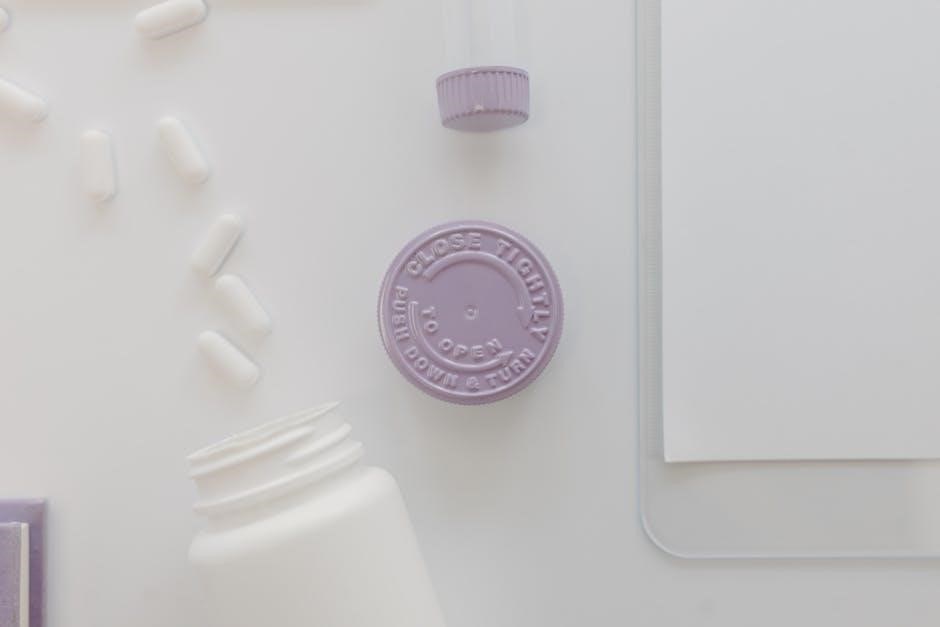
During the Procedure
The Pill Cam capsule moves through your digestive system, capturing images of your small intestine. Data is transmitted to the recorder, and the process typically lasts 8-9 hours.
4.1 How the Pill Cam Works
The Pill Cam is a small, ingestible capsule containing a tiny camera, battery, and transmitter. Once swallowed, it captures images of the small intestine at regular intervals. The capsule transmits these images to a sensor belt worn around the waist, which stores the data. The process is passive, with the capsule moving naturally through the digestive system. The camera takes photos every few seconds, providing a detailed visual record of the intestinal lining. This non-invasive technology helps diagnose conditions like bleeding, inflammation, or abnormalities in the small bowel, areas often hard to reach with traditional endoscopy. The entire process typically lasts 8-9 hours.
4.2 Data Transmission to the Recorder
As the Pill Cam moves through the digestive system, it continuously transmits images to a small, wearable recorder. The recorder, attached to a sensor belt, captures and stores data in real-time. The transmission process is wireless, ensuring uninterrupted monitoring. Patients wear the recorder throughout the procedure, typically 8-9 hours, to ensure all images are captured. The recorder’s memory holds up to 12-18 hours of data, allowing it to store the entire procedure. After completion, the recorder is returned to the healthcare provider for data analysis, enabling accurate diagnosis and treatment planning based on the visual information collected.

4.3 Patient Activities During the Procedure
During the Pill Cam procedure, patients can resume normal daily activities but should avoid heavy exercise or bending. Drinking water is permitted 2 hours after swallowing the capsule, and a light meal can be consumed 4 hours later. It’s essential to wear the provided sensor belt throughout the process to ensure data transmission. Avoiding strong magnetic fields, such as those from MRI machines, is crucial. Patients should also refrain from removing the sensors or belt. Monitoring for symptoms like abdominal pain or nausea is recommended, and any concerns should be reported to the healthcare provider immediately to ensure a safe and effective procedure.
4.4 Duration of the Capsule Endoscopy
The Pill Cam capsule endoscopy typically lasts 8 to 12 hours, during which the capsule captures images of the small intestine. Patients can resume normal activities but must wear the sensor belt to collect data. The capsule naturally passes through the digestive system, usually within 24 hours. It’s crucial to complete the entire recording period to ensure comprehensive imaging. After the procedure, the recorder and sensors are returned to the healthcare provider for analysis. Proper adherence to instructions ensures accurate results and a successful examination.

Post-Procedure Care
After the procedure, rest for a few hours and avoid heavy meals. Resume normal activities gradually. Keep the sensor belt on until the capsule passes naturally. Stay hydrated and avoid lotion on the abdomen. Return the recorder and sensors to your healthcare provider for analysis. Follow your doctor’s instructions for diet and medication resumption. Contact your doctor immediately if you experience discomfort, nausea, or abdominal pain.
5.1 Recovery and Rest
After the procedure, rest for a few hours to allow the capsule to move through your system. Avoid heavy meals and strenuous activities during this time. Stay hydrated by drinking water, but avoid alcohol. Wear loose, comfortable clothing to ensure sensor pads remain secure. Do not apply lotions or powders to your abdomen, as this could interfere with the sensors. Monitor for any discomfort, nausea, or abdominal pain, and contact your doctor if symptoms persist; Resting helps ensure the capsule captures clear images and moves naturally through your digestive system for accurate results.
5.2 Resuming Normal Activities
You can typically resume normal activities within a few hours after ingesting the Pill Cam capsule. Avoid heavy lifting, bending, or strenuous exercise for the remainder of the day. Do not drive or operate machinery if you feel drowsy or uncomfortable. You may eat light meals and return to work or daily routines as long as you are not experiencing discomfort. Ensure the sensor belt remains securely in place to maintain data transmission. Contact your doctor if you experience unusual symptoms or difficulties. Most patients can return to their normal schedule without issues, but listen to your body and rest if needed.
5.3 Diet After the Procedure
After the Pill Cam procedure, you can gradually resume eating, starting with light foods. Two hours after swallowing the capsule, you may drink clear liquids, such as water or broth. Four hours after ingestion, you can eat a light meal, avoiding heavy or fatty foods. Ensure meals are small and easy to digest to aid the capsule’s smooth passage. Avoid consuming anything that could interfere with the capsule’s movement, such as carbonated drinks or high-fiber foods; Follow your doctor’s specific dietary instructions to ensure optimal results and proper function of the Pill Cam.
5.4 Returning the Recorder
After completing the Pill Cam procedure, ensure the recorder is returned to your healthcare provider. The recorder captures essential data from the capsule, so handle it carefully to avoid damage. Typically, the recorder must be returned within 8-12 hours after swallowing the capsule. Verify all components, such as the sensor belt and data recorder, are included. Do not attempt to remove or alter any parts. Prompt return ensures your doctor can review the images and provide accurate results. Failure to return the recorder may result in incomplete data, requiring additional testing. Follow specific instructions provided by your healthcare team for proper return procedures.

Important Safety Instructions
Avoid iron supplements and certain medications before the procedure; Do not eat or drink except as instructed. Wear loose clothing and avoid lotions on the abdomen. Ensure the recorder is secure and functioning properly to capture accurate data. Follow all guidelines to prevent complications and ensure the procedure’s success. Adhere strictly to the provided instructions for optimal results and safety.
6.1 Contraindications for Pill Cam
The Pill Cam is not recommended for individuals with certain conditions. These include intestinal obstruction, pacemaker or implanted metal devices, and difficulty swallowing. Patients with severe narrowing of the small intestine or active Crohn’s disease should avoid the procedure. Additionally, those with swallowing disorders or who cannot follow instructions should not undergo capsule endoscopy. It is crucial to inform your doctor of any medical conditions or devices that may interfere with the procedure. Consult your physician to determine if the Pill Cam is safe for your specific situation. Failure to disclose contraindications may lead to complications or inaccurate results.
6.2 Potential Side Effects
While generally safe, the Pill Cam may cause mild side effects. These include abdominal discomfort, nausea, or bloating due to the capsule passing through the digestive tract. In rare cases, patients might experience capsule retention, which requires medical intervention. Some individuals may also feel temporary discomfort from the sensor belt. Severe symptoms like sharp abdominal pain, vomiting, or difficulty breathing are uncommon but require immediate medical attention. If any unusual symptoms persist or worsen, contact your healthcare provider promptly. Most side effects are temporary and resolve once the procedure is complete.
6.3 Emergency Contact Information
In case of severe symptoms like abdominal pain, nausea, vomiting, or difficulty breathing, contact your healthcare provider immediately. For urgent issues related to the Pill Cam procedure, call the designated emergency number provided by your medical team. If you experience capsule retention or malfunction, seek medical attention promptly. Keep the contact information for your doctor and the endoscopy center handy throughout the process. For non-emergencies, you can reach out during office hours. Remember, your safety and comfort are prioritized, so don’t hesitate to reach out if you have any concerns.
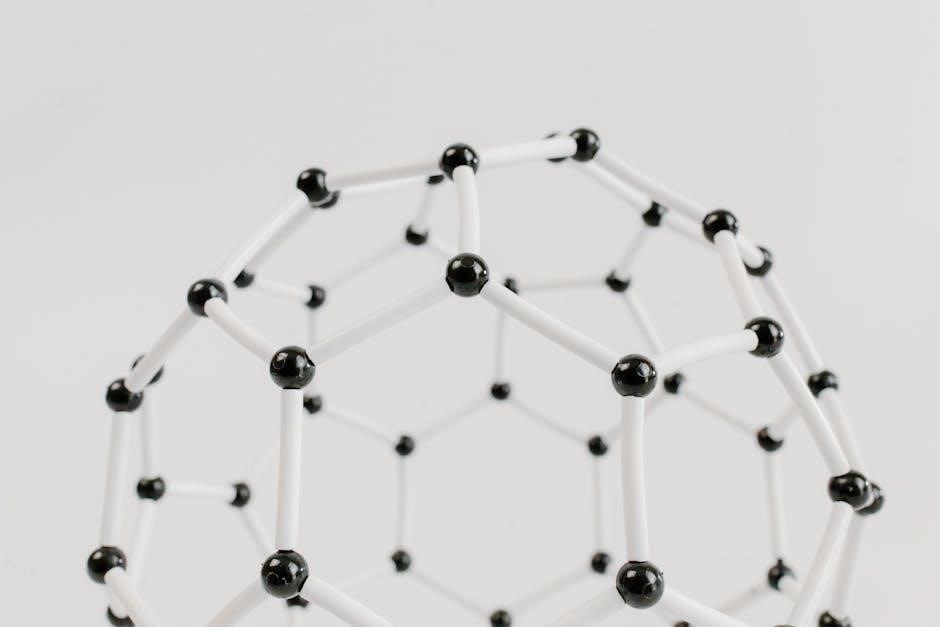
Follow-Up and Results
After the procedure, schedule a follow-up appointment to review the Pill Cam images and discuss findings. Your doctor will interpret the results and outline next steps.
7.1 Scheduling a Follow-Up Appointment
To ensure proper evaluation of your Pill Cam results, contact your doctor’s office to schedule a follow-up appointment. This is typically done within a few days after the procedure. During this visit, your doctor will review the images captured by the capsule and discuss any findings. Be sure to bring any test results or reports with you. If you have questions or concerns, write them down beforehand to address during the appointment. Prompt follow-up is crucial for determining the next steps in your care plan. Call the office if you need to reschedule or have urgent questions.
7.2 Interpreting the Results
After the Pill Cam procedure, a specialist will analyze the images captured by the capsule to identify any abnormalities in the small intestine. The results are reviewed for signs of bleeding, inflammation, or structural issues. Your doctor will explain the findings, highlighting areas of concern or confirming a clean bill of health. If abnormalities are detected, further testing or treatment may be recommended. A detailed report will be provided, outlining the findings and any next steps. Ensure you ask questions during your follow-up appointment to fully understand the results and their implications for your health.
7.3 Discussing Next Steps with Your Doctor
After reviewing the Pill Cam results, your doctor will discuss any findings and recommend further steps. If abnormalities are detected, additional testing or treatments may be necessary. Be sure to ask questions to fully understand the results and their implications for your health. Your doctor will explain whether follow-up procedures, medication, or lifestyle changes are needed. This is an opportunity to address concerns and clarify any uncertainties. Open communication ensures you understand the next steps in managing your digestive health effectively. Your doctor will guide you on the best course of action based on the findings from the capsule endoscopy.
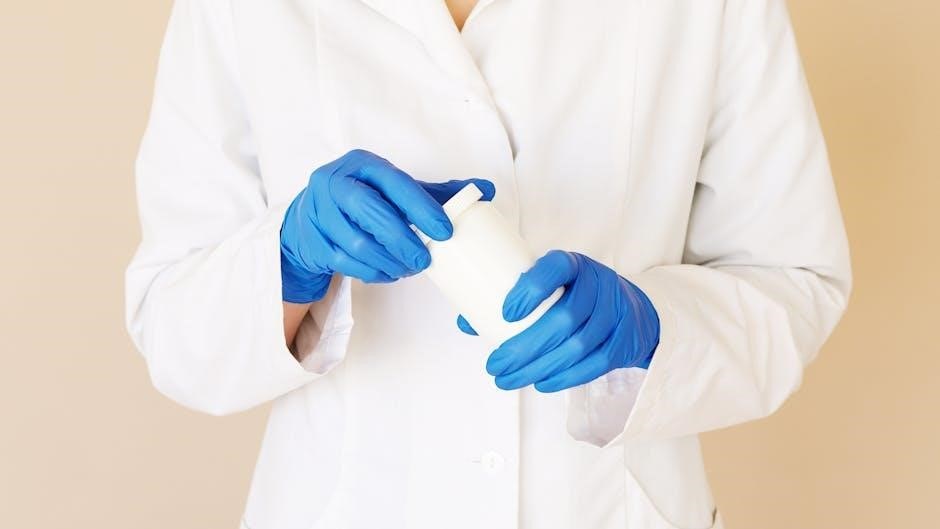
Additional Tips for Success
Adhere strictly to all instructions, stay hydrated, and avoid heavy meals post-procedure. Keep the recorder secure and fully charged. Stay informed and ask questions to ensure clarity and comfort throughout the process.
8.1 Adhering to Instructions
Strictly following your doctor’s Pill Cam instructions is crucial for accurate results. This includes dietary restrictions, medication adjustments, and proper use of the sensor belt. Ignoring guidelines may compromise the procedure’s effectiveness. Ensure you understand each step before proceeding. If unsure, clarify with your healthcare provider. Adherence helps capture clear images of your digestive tract, ensuring a successful diagnosis and appropriate treatment plan. Your commitment to these steps significantly impacts the overall success of the capsule endoscopy process.
8.2 Managing Anxiety or Discomfort
To manage anxiety or discomfort during the Pill Cam procedure, practice deep breathing exercises and stay informed about the process. The procedure is non-invasive and does not require anesthesia, reducing physical discomfort. Wear loose, two-piece clothing as instructed to ensure comfort and proper sensor placement. If anxious, discuss concerns with your healthcare provider beforehand. Understanding the procedure’s duration (8-9 hours) and knowing the capsule passes naturally can alleviate worries. Avoiding lotions or powders on your abdomen ensures sensors function correctly, minimizing discomfort during the process.
8.3 Keeping Track of Medications
Keeping track of medications is crucial before and during the Pill Cam procedure. Stop oral iron supplements five days prior to the procedure, as instructed. On the day of the procedure, take prescribed medications at least two hours before arrival with a small sip of water. Avoid taking any medication within two hours of swallowing the capsule. Ensure to inform your healthcare provider about all medications, including multivitamins, to avoid interference. This careful management ensures the procedure’s accuracy and your safety. Maintaining a list of medications can help prevent errors and promote clear communication with your healthcare team.

Troubleshooting Common Issues
-
- Sensor discomfort: Adjust the sensor belt or pads if irritation occurs. Ensure proper placement for accurate data transmission.
- Nausea or pain: Report severe symptoms immediately, as they may indicate complications. Avoid eating until cleared by your doctor.
9.1 Delayed Capsule Passage
If the Pill Cam capsule does not pass within the expected timeframe (typically 14 days), it may indicate delayed digestion. Monitor bowel movements and check stool for the capsule. Contact your doctor if severe abdominal pain, nausea, or vomiting occurs, as this may signal complications. Ensure adequate hydration and maintain a high-fiber diet to aid natural passage. Avoid self-medication unless advised. If the capsule remains undetected after 14 days, further medical evaluation may be necessary to prevent potential obstruction risks. Always follow your doctor’s guidance for post-procedure care and monitoring.
9.2 Sensor Discomfort or Malfunction
If the sensor belt causes discomfort or malfunctions, adjust its position gently. Ensure proper adhesion of sensors to the skin for accurate data transmission. If discomfort persists, remove the belt and contact your healthcare provider. In case of malfunction, check connections and restart the recorder if needed. Avoid submerging the equipment in water. Do not tamper with the sensors, as this may damage the device. If issues persist, return the equipment to the clinic for inspection. Always prioritize comfort and functionality to ensure reliable data capture during the procedure. Follow any additional guidance provided by your healthcare team to resolve the issue promptly.
9.3 Nausea or Abdominal Pain
If you experience nausea or abdominal pain during or after the Pill Cam procedure, contact your healthcare provider immediately. Mild discomfort may occur but should not persist. If pain is severe or accompanied by vomiting, it could indicate a blockage or obstruction. Avoid eating or drinking until further instructions are given. Your doctor may recommend medications to alleviate symptoms or request an imaging study to assess the situation. Severe or persistent pain requires urgent medical attention to rule out complications. Always follow your provider’s guidance to ensure your safety and the success of the procedure.
Following Pill Cam instructions ensures a safe and effective procedure. Proper preparation and adherence to guidelines maximize results, helping your doctor diagnose and manage your condition effectively.
10.1 Importance of Following Instructions
Adhering to Pill Cam instructions is crucial for ensuring the procedure’s success and your safety. Proper preparation, such as dietary restrictions and bowel prep, ensures clear images of your intestines. Following guidelines for medication, clothing, and activity helps avoid complications and guarantees accurate results. Ignoring instructions may lead to incomplete data, delayed diagnoses, or procedural issues. By carefully following the steps outlined, you enable your healthcare team to make informed decisions about your treatment. Your cooperation and attention to detail are key to achieving the best outcomes from this advanced diagnostic tool.
10.2 Expected Outcomes
Successful completion of the Pill Cam procedure provides detailed images of the small intestine, aiding in the diagnosis of conditions like Crohn’s disease or bleeding sources. Proper preparation ensures clear imagery, enabling accurate diagnoses. The procedure is minimally invasive, offering a comfortable alternative to traditional endoscopy. Following instructions carefully enhances the likelihood of capturing essential data, leading to appropriate treatment plans. Patients can expect a thorough evaluation of their intestinal health, facilitating timely medical interventions. The outcomes are designed to improve your care and overall well-being, making the Pill Cam a valuable diagnostic tool for gastrointestinal health.
